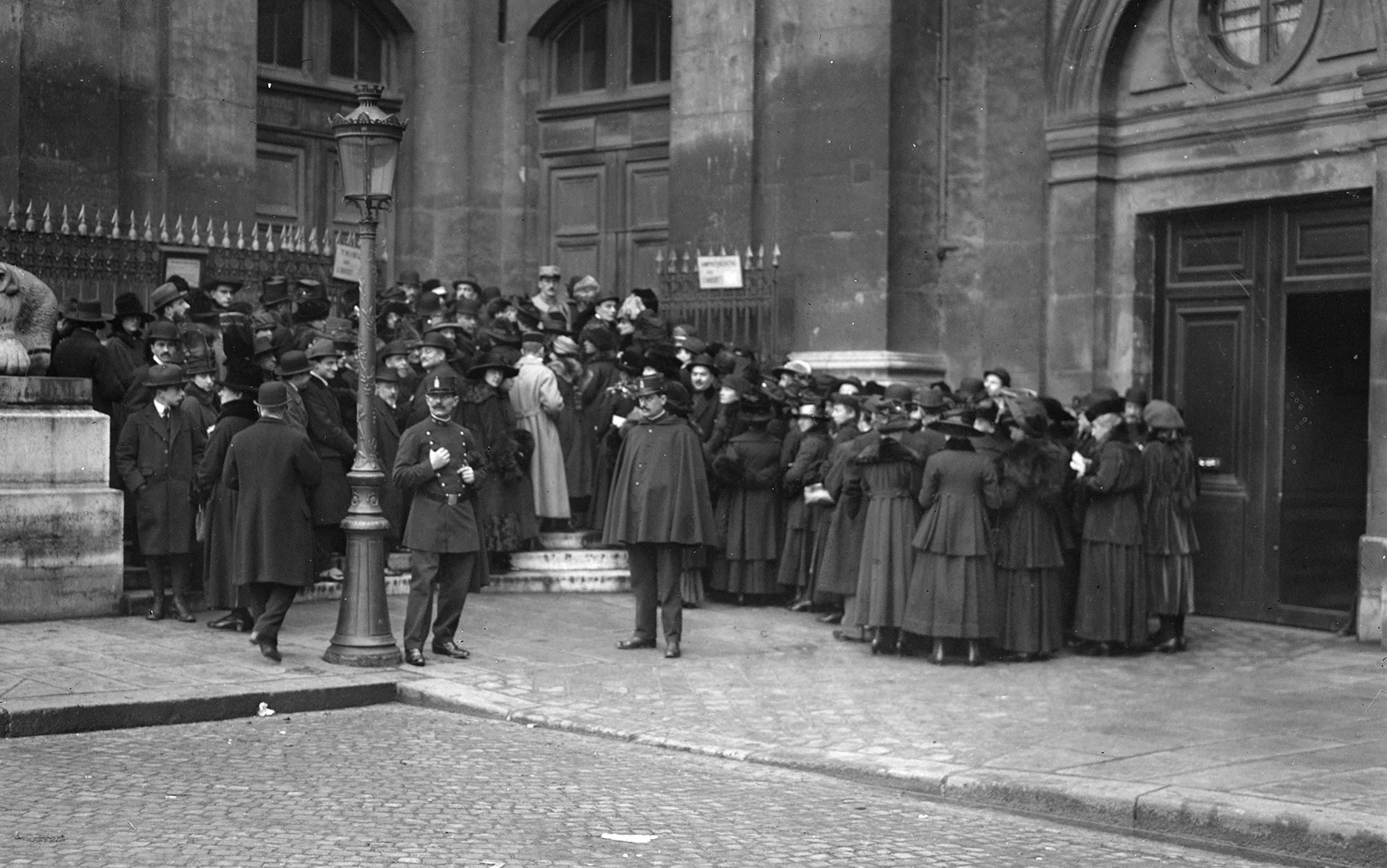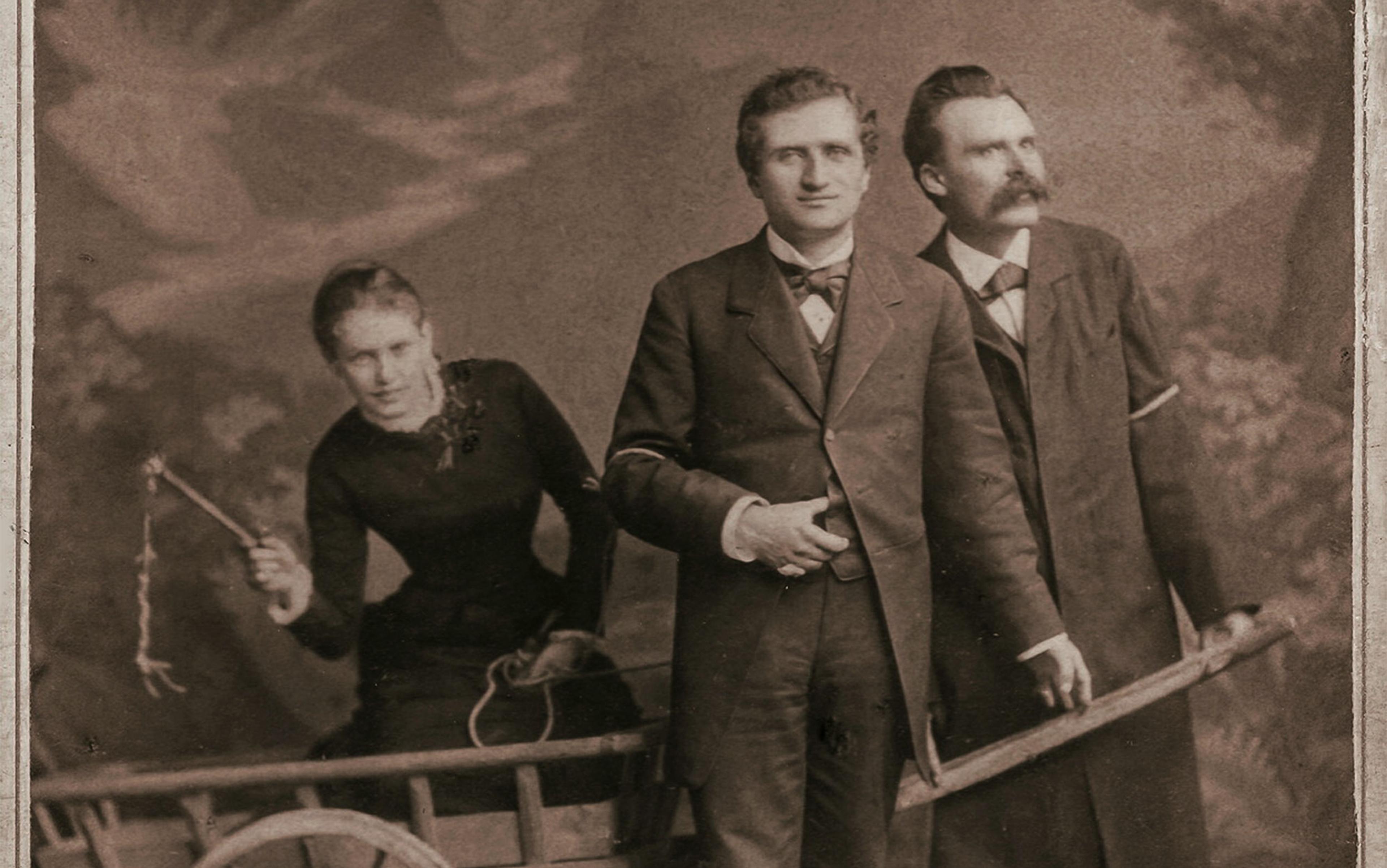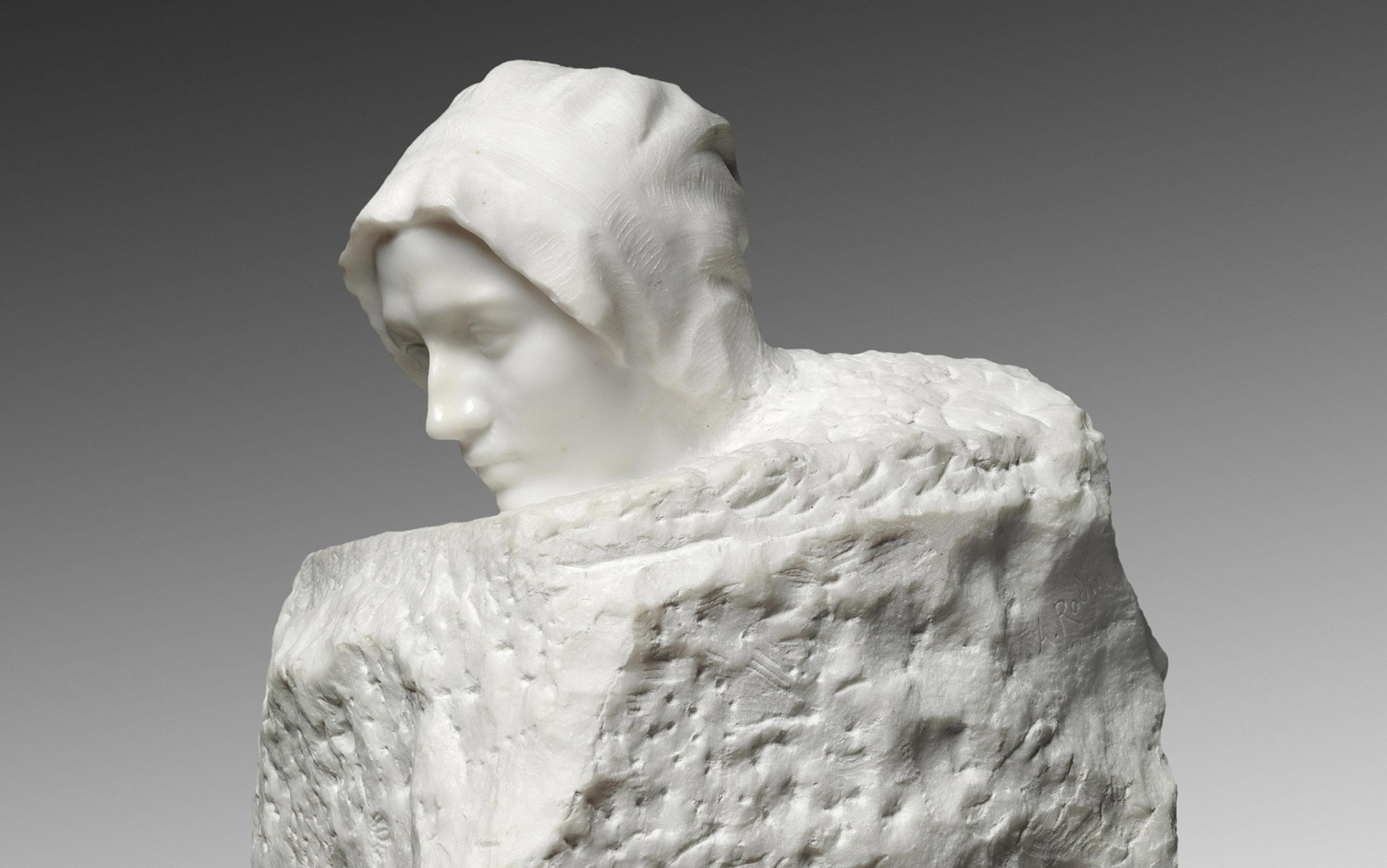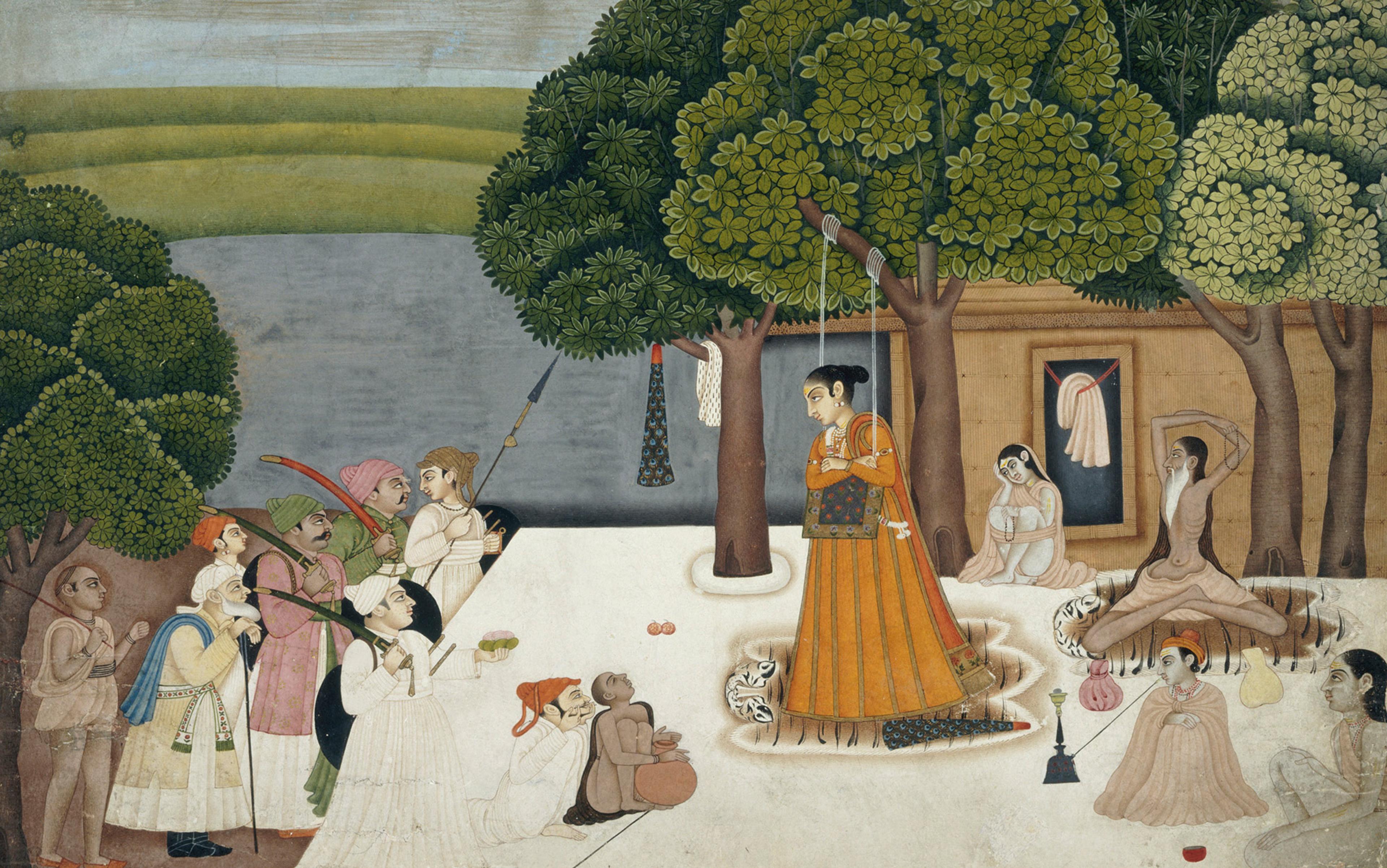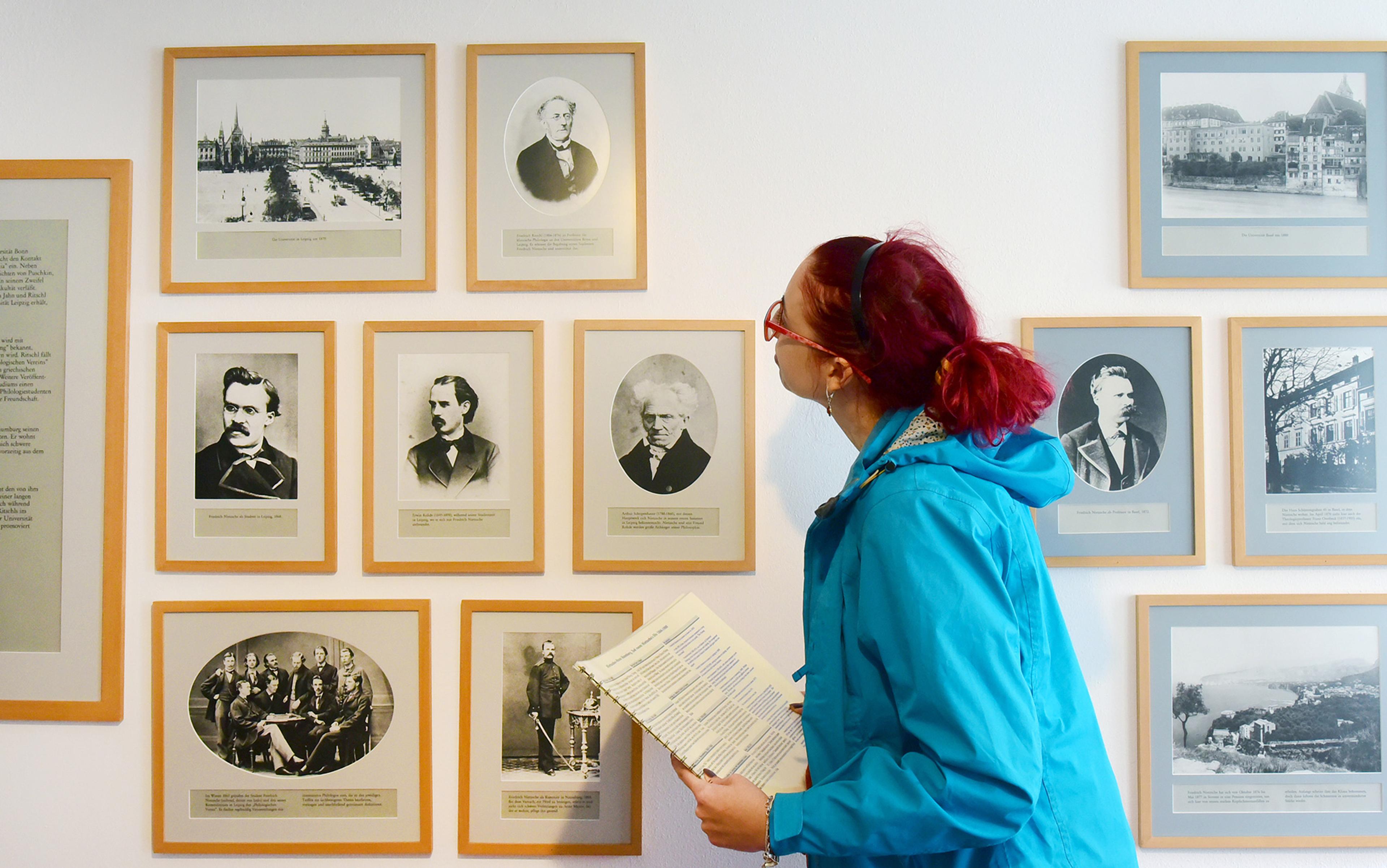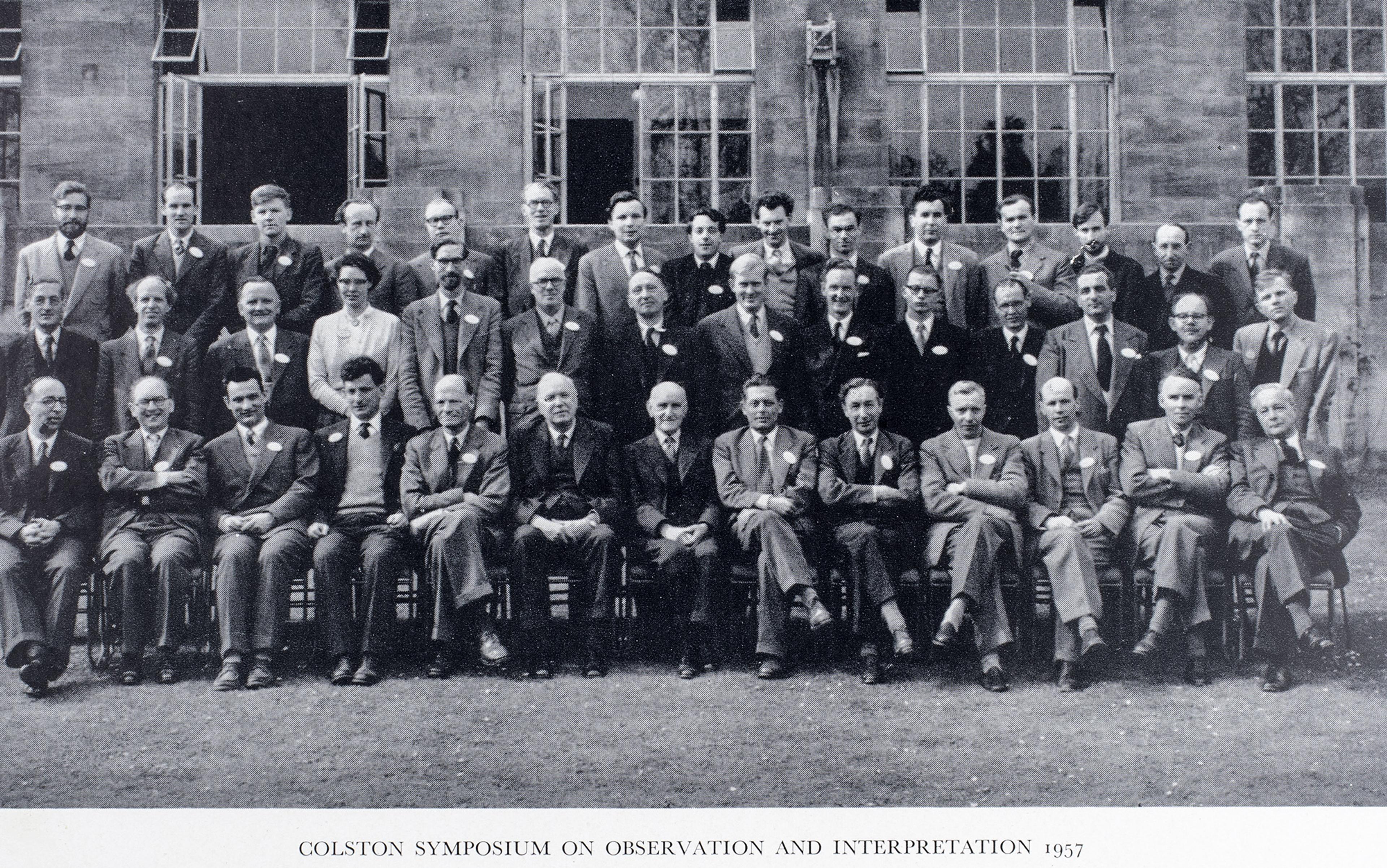In the early decades of the 20th century, the French philosopher Henri Bergson was an international celebrity. His fame had skyrocketed with the publication of his fourth book, Creative Evolution (1907). A philosophical interpretation of biological evolution, it rapidly became a worldwide bestseller. Suddenly, everyone was talking about Bergson’s philosophy of real time, or ‘duration’. The press was quick to pick up on this, regularly reporting the weekly riots that occurred whenever he lectured at the Collège de France in Paris. Bergson attracted a bigger audience than his lecture theatre could contain. On average, 700 people would attempt to squeeze into a room designed for 375. It was suggested that his classes be moved to the Grand Amphithéâtre of the Sorbonne or even to the Palais Garnier. Abroad too, Bergson drew huge crowds. The talks he delivered in London in 1911 filled venues to their ‘utmost capacity’, and he was greeted to the sound of ‘loud cheers’. Two years later, a visit to New York caused the first ever traffic jam on Broadway.
Bergson’s philosophy could be summarised in four words: time is not space. Time as treated in mathematics and physics – represented as a succession of discrete and identical units (minutes on a clock, points on a line) – did not endure, said Bergson. It was merely a juxtaposition of ever-renewed presents. Bergsonian time, or ‘duration’, on the other hand, was time uncontaminated by space, the continuous flow of interpenetrating moments. Bergson subverted the dominant view in Western thought that held that the immutable – think Platonic forms – was more real than the changeable (understood as corruptible). Au contraire, according to Bergson, ‘reality is mobility’, change is an essential feature of the human conscious experience, and the very condition of free will – in other words: ‘To exist is to change, to change is to mature, to mature is to go on creating oneself endlessly.’ In Creative Evolution, Bergson applied his ideas about time to one of the pressing issues of the day, biological evolution. He developed these ideas in his lectures, alongside erudite accounts of the history of philosophical thought.
These lectures were open to the public, and Bergson attracted hundreds of native and foreign philosophy students, fashionable writers and wealthy Parisian socialites. As Bergson’s renown expanded, commentators became increasingly fascinated with a remarkable feature of his audience: it consisted mostly of women. The literary critic and politician Gaston Deschamps noted that a new trend could be observed in Paris: every day, around five o’clock, ‘We hear the most beautiful women of our century deliciously conversing around small tables about M Henri Bergson, they salute Creative Evolution in their reedy voices, they coo over the wonders of emotional intuition and gloss over the “vital impetus”.’
Journalists and writers often skimmed over the philosophical content of Bergson’s lectures, to concentrate on what they viewed as the more practical problems that came with a female crowd. For instance, on one occasion, as the French newspaper Le Temps reported, the heat in the lecture theatre became so unbearable that ‘several young women were indisposed and had to be escorted outside’. And, in the words of a writer for the British literary magazine The New Age, Bergson’s lectures were characterised by ‘the unbearable odours of perfume’, ‘the crush of fashion’ and ‘the rudeness’ of the audience. Comments about perfumed, fainting, fashionable, chattering women thus became a common comical trope, adding to the frenzy and mystique surrounding Bergsonmania. Journalists frequently contrasted, for dramatic or comedic effect, the perceived frivolity and sentimentality of female Bergsonians with the solemnity of a philosophy lecture.
In October 1911, The New Age sent a writer to attend one of four highly anticipated lectures that Bergson delivered at the University of London that month. Crowds of hundreds had rushed to obtain much-coveted tickets. The hopeful were asked to provide details of their qualifications such that the reporter Thomas Gratton (the pen name of the literary critic T E Hulme), noted: ‘The approaches to the lectures seemed to be as well-guarded as those to a harem.’ Once inside, he reported:
I look round and find that my speculations about the harem have at least this basis of fact – nine people out of 10 present here are women, most of them with their heads lifted up in the kind of ‘Eager Heart’ attitude, which resembles nothing so much as the attitude of my kitten when gently waking up from sleep … The terrifying thought came into my head: if these are the elect, these the picked ones, what were the rejected like?
In France, Bergson’s female followers were given derogatory nicknames such as caillettes, which designated a type of pâté, a kind of small bird, and in this context, a frivolous babbling woman, and snobinettes, which conveyed the common assumption that these women were ignorant socialites more interested in being seen at a fashionable event than in learning about philosophy. In 1912, Bergson was preparing to leave on an eagerly anticipated tour of the United States that would take place the following year. A writer for the magazine La vie Parisienne – known for its literary critiques, erotic illustrations, satirical takes on art, culture, politics and the indiscretions of the Parisian elite – scoffed: ‘How will our snobinettes quench their thirst for metaphysics?’ Which professor, the reporter wondered, would these ‘anxious women’ choose to replace Bergson? Surely, their decision would be based on the convenience of the time slot of the lectures rather than on their content.
The female audience was depicted as a crowd of posers, too frivolous to develop any profound interest in philosophical matters, and thus undeserving of the precious seats at the Collège de France. Many commentators thus dismissed the Bergsoniennes’ enthusiasm for philosophy as nothing more than the bourgeois attempts of mondaines (socialites) to raise their social standing. Such ideas were embedded within a long tradition of French satire at the expense of learned women. In the 17th century, the term précieuses ridiculed the Parisian women who would meet to discuss literature and engage in witty wordplay. The French playwright Molière mocked what he viewed as the shallow excesses of female literary practices in comedies such as Les Précieuses ridicules (1659) and Les Femmes savantes (1672). Two and a half centuries later, Philaminte, one of Molière’s fictional précieuses (learned ladies), was added to the list of nicknames for Bergson’s female followers.
The presence of women in a traditionally exclusively masculine space was regarded at best as a source of ridicule, at worst as a nuisance (for instance, some worried that, by their mere presence, the Bergsoniennes were robbing male philosophy students of their rightfully earned seats). Others took this phenomenon to be the sign of something more serious. The fact that so many women were drawn to Bergson’s philosophy perhaps said something about Bergson as a thinker. Indeed, traits traditionally associated with femininity, such as irrationality and sentimentality, clashed with the traditionally masculine qualities deemed necessary to be a good philosopher. Some of Bergson’s most serious adversaries began arguing that Bergson’s success among women was no accident. They believed that the reason the most irrational beings of all, women, were so enthusiastic about Bergson’s ideas was that Bergson’s philosophy was a philosophy of the irrational.
Bergson’s style, spoken and written, was highly evocative and metaphorical. It was often described as ‘poetic’ by both his admirers and critics. This earned him the Nobel Prize for Literature in 1927, but also a reputation for a lack of rigour. As evidence, the philosopher’s critics used Bergson’s argument that the symbols and concepts of science and logic were intrinsically limited in what they could say about the ever-changing nature of the world. In Creative Evolution, Bergson argued that, paradoxically, human intelligence had evolved in such a way that it was bad at understanding evolution. Through a methodical introspective effort, however, intuitive knowledge of the mobile nature of reality uncontaminated by space could be attained. Bergson was rapidly accused of extreme anti-intellectualism. His adversaries often saw themselves as defenders of rationality, and presented the ever-increasing popularity of Bergson’s intuitive methods as a dangerous assault on positive knowledge. Bergson’s philosophy, they said, lacked clarity, and should be combatted, because it was grounded in an unreliable and obscure mysticism that was ‘feminine’ in nature. A writer for The New Age expressed this idea succinctly and scathingly: ‘True, Bergson was nearly suffocated by scent when women attended his lectures; but had Bergson really been a philosopher, no woman would have listened to him.’
The associations between femininity, irrationality and Bergsonism often overlapped with anti-Semitic attacks against the philosopher. In France, such attacks were coordinated by a group of thinkers affiliated with the Right-wing anti-Dreyfusard political movement Action Française. Between 1910 and 1911, Pierre Lasserre, the main literary critic for the movement’s newspaper (also Action Française), published a series of anti-Bergsonian articles. He painted Bergson’s philosophy as excessively sentimental and vague and, in his final article, asserted that Bergson would never reach the level of an Aristotle or a Leibniz because he was Jewish.
Such ideas were in line with the theories of the intellectual leader of Action Française, Charles Maurras, who frequently warned that French civilisation was declining because of the influences of ‘barbarian’ and ‘feminine’ ideologies. According to Maurras, Bergson, as the ‘Master of Jewish France’ and a defender of ‘feminine romanticism’, embodied both threats. It is difficult to overestimate the influence of the toxic ideologues of Action Française. Their reach extended far beyond French politics. For instance, around the time that T S Eliot wrote ‘The Love Song of J Alfred Prufrock’ (between 1910-1915), the poet had been reading Lasserre and Maurras’s accounts of what they viewed as the decline of French culture. It is therefore difficult not to read Maurras’s warning about the dangers of a feminised culture in Eliot’s twice-repeated lines:
In the room the women come and go
Talking of Michelangelo
In an interesting twist, Eliot later claimed that, when he had written the poem, he had been undergoing ‘a temporary conversion to Bergsonism’. Bergson and Maurras were as opposed as two thinkers could be, but Eliot had digested elements from their respective messages. It is a testament of the complexity of the cultural politics of the time that one of the seminal pieces of literary modernism could be influenced by Maurassian misogynistic and antiromantic ideology, while being structured around literary symbolism and stream-of-consciousness techniques that were inspired by Maurras’s enemy, Bergson.
Women’s ‘devastating affability’ would render them incapable of maintaining the seriousness required
Attacks against the supposed femininity of Bergsonism were eventually redirected, in a circular movement, against the Bergsoniennes. The fact that so many women seemed naturally drawn to a philosophy deemed as unrigorous as that of Bergson constituted incontestable proof that women could not be trusted with intellectual matters. Long-time Bergson critic and writer Jules Lermina denounced ‘Bergson’s sentimentalist propaganda’ which, he said, women used to justify their irrational beliefs such as the possibility of life after death. A writer for the British magazine The Bystander invited his readers to imagine a future in which women would occupy positions in all areas of society. Women’s ‘devastating affability’ would render them incapable of maintaining the seriousness required for the effective operation of ‘civic life’, he suggested. The effect on the literary world would be devastating: ‘whole shelves emptied of deeply theological and scientific works’ would be replenished with more frivolous feminine topics. And, he added:
As far as my affrighted intelligence can judge, the position of affairs will, at least, be a gigantic test of Bergson’s theories. Everything will, of course, be done by intuition. Trains will be driven, arrive, and depart as Woman’s sub-sub-conscious mind directs. There will be no such thing as scheduled time, only Time – if that.
The stakes were high, as Bergson’s rise to fame came at a time when women’s right to vote was being debated. The intellectual abilities of potential female voters therefore came under close scrutiny. In France, energised by the British and American suffragette movements, a French Union for Women’s Suffrage was formed in 1909. The various actions of the group forced French lawmakers to pay closer attention to the issue. In 1913, Hélène Miropolsky, an active feminist who had become the first woman barrister to practise in France a few years earlier, attended sessions at the French National Assembly in which senators debated the question of the female vote. One of the main arguments mobilised against female suffrage rested upon the idea that such a radical change might undermine the recently implemented separation between Church and state. Women were deemed highly suggestible, in particular to the authority of priests. It was feared that priests would be able to find their way back into the political sphere by manipulating the political opinions of their female parishioners. As a result, while many of the senators were favourable to the idea ‘in theory’, the time was not, they thought, ripe for the female vote.
One senator, Eugène Lintilhac, argued that it would be the duty of the state to provide women with a secular education, which might in time equip them with the intellectual tools to make rationally informed decisions. He explained, Miropolsky reported, that such measures would protect women against ‘their innate mysticism [and] against the immoderate impulses of their sensitivity, which is more intuitive than rational’. ‘Admittedly,’ he added, ‘intuition – according to Bergson – is an instrument of knowledge, but it is not an instrument of democratic order.’
In 1913, Bergson was asked about his views on the ‘feministic movement in Europe and America’. While he made a point of stating that he had ‘not found any difference of level between the male and female mind’, and that in the days when he taught both young men and women he would have been incapable of distinguishing the essays written by female students from those by male students, Bergson nevertheless expressed some reservations about giving the vote to all women, all at once:
When you ask me about the woman’s movement, I say I am for experimenting, but I must add that it is a dangerous experiment; since half of the people would suddenly get votes. I think it should be done gradually. Women have thus far not had the interest in politics and could not be expected to have the aptitude for it … I certainly do not approve of the militant methods of the suffragettes. I know that wherever there is enthusiasm there is violence, but the women are injuring their own cause.
This type of argument, as well as those advanced by senators such as Lintilhac, evidently made quite an impact, as French lawmakers consistently voted against female suffrage, and French women would have to wait until 1944 to be eligible to vote.
In the years after the First World War, Bergson retired from his post at the Collège de France, and although the 1920s brought their share of publicity (his public debate with Einstein in 1922 was reported internationally, and he was awarded the Nobel Prize in 1927), he slowly and deliberately stepped out of the spotlight. Bergson had never enjoyed fame and, as he removed himself from the public eye, he seemingly disappeared from people’s minds.
Why, when Bergson was popular, was he so popular, and especially with women? A combination of factors, including the public nature of his lectures and the clarity of his lecturing style no doubt contributed to his fame. Women in particular would have benefitted from the fact that Bergson’s lectures, which were held outside the stuffy confines of the exclusive Sorbonne, presented complex and subtle ideas in a way that was digestible to those who had perhaps not benefitted from a formal philosophical education. More importantly, Bergson’s philosophy was a philosophy of change, creativity and freedom that many, in the years leading up to the First World War, used as a way of channelling their own political hopes. Perhaps the women of the late Belle Époque were so drawn to Bergson because his philosophy was then a rallying point for those who believed radical change was possible – much as their descendants would be drawn to the philosophy of Jean-Paul Sartre and Simone de Beauvoir in the late 1940s.
It was because Bergson’s philosophy was feminine in nature that it should be taken seriously
It is difficult to uncover the precise identity of the women who attended Bergson’s Collège de France lectures. In order to gain insights into the thoughts of the Bergsoniennes, we must therefore turn to their writing. In 1913, the American author and feminist Marian Cox (born Mabel Marian Metcalfe) published the article ‘Bergson’s Message to Feminism’. She argued that humanity’s quest for a better understanding of the Universe, both scientific and theological, had so far been entirely based on male, materialistically driven methods. Instinct and intuition, on the other hand, were in tune with the creativity of life and with the female mind. By placing instinct and intuition at the centre of his philosophical method, Bergson’s outlook was therefore ‘an exposition and a plea for this female-method in the future quest of knowledge’. Ultimately, said Cox, Bergson’s philosophy would aid the liberation of women. Therefore, at a time when the idea that Bergsonism was inherently feminine was being used to diminish his authority as a philosopher, Cox argued that it was because Bergson’s philosophy was feminine in nature that it should be taken seriously.
Little more than a decade later, the young de Beauvoir, who would herself become one of the 20th-century’s most famous and influential thinkers, became an avid reader of Bergson. While she disavowed Bergson in her memoirs, her diaries tell another story. Born in 1908, de Beauvoir was still a young child when Bergson was at the height of his fame. At the age of 18, in 1926, she wrote of a ‘great intellectual intoxication’ after reading his works. Unlike Cox’s interpretation, de Beauvoir’s reading of Bergson did not hinge upon essentialist notions of femininity (that would have been incompatible with her existentialism). Instead, she appears to have been inspired in her views on fiction by Bergson’s methodical use of metaphors, and she was moved by Bergson’s idea that true freedom was to be found within the immediate data of lived experience.
Beyond their Bergsonism and other theoretical affiliations, these thinkers were intellectually productive in their own right. These two examples alone dispel the notion that women were interested in Bergson only because he was fashionable. Cox and de Beauvoir are just two cases of the many 20th-century women who engaged in radically different and sophisticated ways with the philosophy of their time.
One would hope that the important role played by women in the history of philosophy no longer needs to be demonstrated, but philosophy books, articles and curricula remain chronically dominated by (mostly European) men. Two contemporary philosophers in the UK, Rebecca Buxton and Lisa Whiting, have recently taken it upon themselves to crowdsource and edit the book The Philosopher Queens, ‘about women in philosophy by women in philosophy … from Hypatia to Angela Davis’. Such initiatives forever put to rest the concerns of those who thought that women were not intellectually worthy of a seat at Bergson’s lectures, and remind us that women have always contributed to the development of philosophy, as readers, as members of its audiences, but also as authors and speakers.
